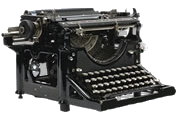The Future of War-Artists (Literary Digest, 1917)
Just as the American poet Walt Whitman once remarked concerning the American Civil War – that the real war will never make it into books, so goes the thinking of the ink-stained wretch who penned the attached column regarding the efforts of the Official War Artists during W.W. I – who attempted to render accurately the horrors of war. Such genuine indecency could never allow itself to be duplicated into a two or three dimensional format.
The Future of War-Artists (Literary Digest, 1917) Read More »
